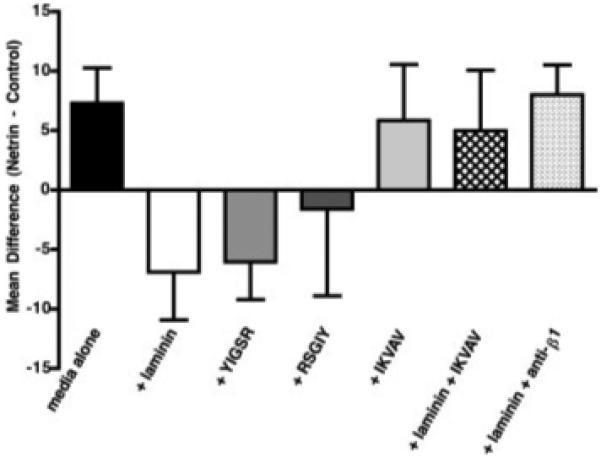Figure 5.

The preferential outgrowth of neurites from explants of E14 nodose ganglia toward cocultured netrin-1-secreting cells is blocked by soluble laminin. Aggregates of stably transfected netrin-1-secreting and control cells were positioned on either side of cocultured nodose ganglia. The difference in neurite density in defined regions of outgrowth either toward the netrin-secreting or control cells were calculated. The mean of the differences was used to compare conditions; a mean difference greater than 0 signifies attraction. The selective extension of nodose neurites towards netrin-1-secreting cells is significantly blocked by soluble laminin (p < 0.01) and by the peptide sequence YIGSR (p < 0.004). Addition of the reverse peptide sequence, RSGIY, to the culture media also reduces the mean difference to <0. The peptide sequence IKVAV, on its own, does not affect the ability of neurites from nodose ganglia to be attracted to netrin-1-secreting cells, but can block the action of laminin when both IKVAV and soluble laminin are added to the culture media and restore the mean difference to >0. Similarly, the simultaneous addition of antibodies to β1-integrins (anti-β1) and soluble laminin reverses the repellent effects of lamimin and significantly restores the ability of neurites from nodose ganglia to be attracted to netrin-1-secreting cells (p < 0.03). Error bars = standard error of the mean.
